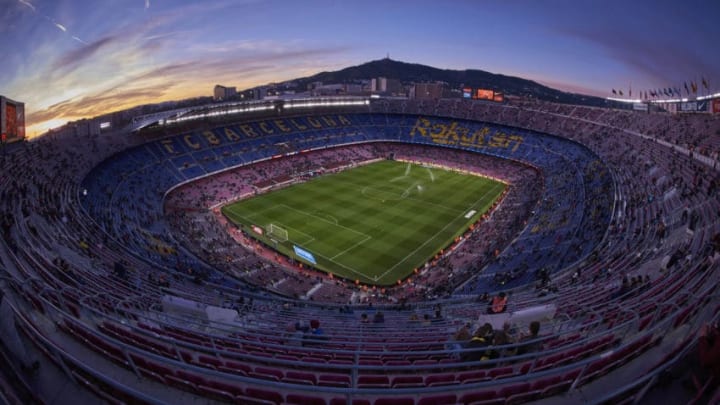Barcelona are struggling to fill the Camp Nou as it is
The Camp Nou at Barcelona is the largest football stadium in Europe, and the second largest in the world, after Rungrado 1st of May Stadium in Pyongyang in North Korea. It has a capacity of 99,354 and is rated at the highest of four stars by UEFA.
It has been renovated thrice since being opened 61 years ago. The first renovation was made in the build-up to the World Cup, where it hosted 5 matches, most notably the semi-final between Italy and Poland. The seating capacity was increased to around 120,000.
Further changes were made in 1995, with the pitched was lowered and the moat was removed to expand the seating area. In 1999, the seating capacity was reduced to the current one. But 9 years later, club president Joan Laporta formulated a plan for further record-breaking expansion.
He hired British architect Normal Foster to remodel the stadium. The Barcelona board also approved the sale of Barça B’s home ground, the Mini Estadi to fund the mammoth €250 million project that would require more than 3 years to complete.
But the supporters failed to throw their weight behind the sale of the Mini Estadi, the literal breeding ground of club legends like Carles Puyol, Xavi and Andrés Iniesta. So, candidate Sandro Rosell used that to remove Laporta from power and assume presidency.
Rosell’s successor and current president Josep Maria Bartomeu raised the issue again in 2014 after his election. Laporta’s earlier proposal of ‘restructuring’ the Camp Nou was rejected due to its expensiveness. But the board did agree to sanction an expansion.
Barça released the comprehensive plan in 2015, with plans to add a canopy over the entire stadium, with the new capacity being 105,000. The construction work has already started, and is expected to continue till 2022.
This decision taken by Bartomeu and his board is one of the worst ever, in the history of the club. It is economically foolish and undermines the identity of the club as a typical Catalan club with rustic roots.
The stadium’s filling rate was 78% on an average when the plans were released. But last season, it dropped to 66%, which is a very low figure for a club of Barça’s stature. In one of the biggest games last season, the Copa del Rey semi-final against Valencia, it was just 50%.
More from Everything Barca
- FC Barcelona tracking Belgian Wonderkid
- FC Barcelona vs Betis Player Ratings
- Barça boss Xavi to get contract extension
- FC Barcelona planning swoop for Arsenal midfielder
- Barcelona interested in €30 million wonderkid
Also, the revenue from non-season ticket holders has taken a serious hit in recent times. This is mainly due to the increase in ticket prices. The attack in La Rambla in 2017 has also scared off many potential tourists from around the world who come to the city to watch games.
So, the decision to increase the seating capacity of the Camp Nou is one showing a lack of objectivity on part of the Barcelona board. When the club cannot fill the current capacity, how can it fill a bigger stadium with more seats?
But most importantly, the uniqueness of the Camp Nou lies in its lack of a roof and a canopy. While most top European stadiums have a canopy and a retractable roof, the Camp Nou has neither, except for a small canopy on one end of the arena.
This has been representative of the down-to-earth nature of the club and exemplifies the motto, ‘Mesque que un club’. This stadium has symbolised the most elegant displays of football in history while a stadium with a canopy has a corporate feel to it, like the Allianz Arena.
While a stadium with a canopy looks minimalistic and stylish, it lacks the old-world charm of the current Camp Nou. The Barcelona board are risking a virtual identity crisis with this change in the dynamic vibe of the great stadium.
The construction started in the summer of 2018, and there is still yet enough time to backtrack without a huge loss. The club can save €600 million, and use those funds in infrastructure development at La Masia and for transfers.
